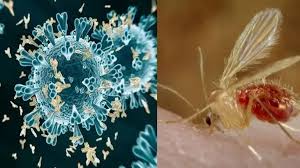Chandipura Virus Infection:

The Gujarat government said that six children have died of suspected Chandipura virus (CHPV) infection in the state since July 10.
- Chandipura Virus Infection is a virus of the Rhabdoviridae family, which also includes other members such as the lyssavirus that causes rabies.
- Several species of sandflies like Phlebotomine sandflies and Phlebotomus papatasi, and some mosquito species such as Aedes aegypti(which is also the vector for dengue) are considered vectors of CHPV.
- The virus resides in the salivary gland of these insects, and can be transmitted to humans or other vertebrates like domestic animals through bites.
- The infection caused by the virus can then reach the central nervous system which can lead to encephalitis — inflammation of the active tissues of the brain.
- Disease progression can be as rapid as a patient reporting high fever in the morning, and their kidneys or liver being affected by the evening.
- The CHPV infection presents initially with flu-like symptoms such as acute onset of fever, body ache and headache.
- It may then progress to altered sensorium or seizures and encephalitis.
- Respiratory distress, bleeding tendencies, or anaemia.
- The infection often progresses rapidly after encephalitis, which may then lead to mortality within 24-48 hours of hospitalization.
- This infection has largely remained limited to children below 15 years.
- The infection can only be symptomatically managed as currently there is no specific antiretroviral therapy or vaccine available for treatment.




